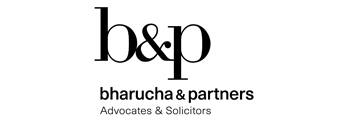In M Suresh Kumar Reddy v Canara Bank and Ors, the Supreme Court clarified that its observations in Vidarbha Industries Power Limited v Axis Bank Limited were restricted to the particular facts of that case. Therefore, except in exceptional circumstances, the National Company Law Tribunal (NCLT) must admit applications under section 7 of the Insolvency and Bankruptcy Code, 2016 (IBC) once the existence of a debt and default is established.
In Suresh Reddy, the NCLT admitted an application by Canara Bank under section 7 of the IBC against Kranthi Edifice Pvt Ltd, the corporate debtor. In 2016, the bank granted overdraft and bank guarantee facilities to the debtor, which then defaulted on its repayments. The appellant, a suspended director of the corporate debtor, appealed the NCLT’s decision to admit the application and commence the corporate insolvency resolution process (CIRP). Relying on Vidarbha, the appellant argued that, notwithstanding the existence of a debt and default, the application should have been rejected. The corporate debtor had repeatedly tried to reach a one-time settlement with the bank. The Telangana government had also written several unanswered letters to the bank seeking an extension of the bank guarantees because it had granted a contract to the corporate debtor.

Partner
Bharucha & Partners
The court rejected these contentions, clarifying that the decision in Vidarbha was restricted to the facts of that case and that judicial observations on the NCLT’s discretion in admitting petitions under section 7 of the IBC could not override the clear framework of the code. The court held that once a default is established, the NCLT cannot refuse to admit the application unless there are cogent and compelling reasons to do so.
The decision in Suresh Reddy is a significant and welcome clarification. The decision in Vidarbha gave rise to many potential issues in insolvency proceedings. It provided corporate debtors with a set of defences to delay and avoid insolvency proceedings. It also put the financial creditors at a disadvantage as against operational creditors. If Vidarbha allowed adjudicating authorities to examine factors beyond the existence of a debt and default, it would lead to protracted CIRPs. This is contrary to the objectives of the IBC to ensure a timebound process for CIRPs. Although the IBC has shortened the average period for insolvency proceedings, it has fallen short of enforcing the statutory timelines of 330 days for completion of the resolution process. In practice, the admission or rejection of most CIRP applications takes far longer than the statutory 14 days. The average time taken in admitting applications under section 9 of the IBC in 2021-2022 was 650 days, nearly twice the maximum permitted for CIRPs. The Ministry of Corporate Affairs (MCA) stated in a written reply to the Lok Sabha that on 31 January 2023, 12,963 IBC cases were pending before the NCLT. As at 31 March 2023, 64% of CIRPs had been pending for more than 270 days, and the average time taken for the closure of CIRPs initiated by financial creditors was 613 days.
Suresh Reddy demonstrates that corporate debtors cannot mechanically rely on Vidarbha to oppose the commencement of CIRP in cases of unpaid debts. However, the case does not completely negate defences raised by corporate debtors. Suresh Reddy emphasises that cogent and compelling circumstances must exist for the NCLT to refuse a CIRP under section 7 of the IBC, as in Vidarbha. The NCLT must make an objective assessment of the facts of the case and the arguments of the parties to determine if a CIRP should be initiated.
The decision in Suresh Reddy is more closely aligned with changes to the IBC being considered by the MCA. These include an amendment to section 7 that would make it mandatory for the adjudicating authority to admit the application for CIRP once the debt and default have been established. This would remove any discretion NCLT may presently have. The government appears to be fully behind this proposed change, which would mitigate the ambiguity of law created by the decision in Vidarbha. The objective of the IBC would be restored. While the legislative changes to the IBC are awaited, the decision in Suresh Reddy has provided much-needed clarity and may provide financial creditors with comfort until the necessary legislation comes into effect.
Sonam Gupta is a partner and Arunima Nair is an associate at Bharucha & Partners.

Equity Mansion,
R-1, Nehru Enclave,
New Delhi 110 019, India
Contact details:
Tel: +91 11 4593 9300
Email: sr.partner@bharucha.in


























